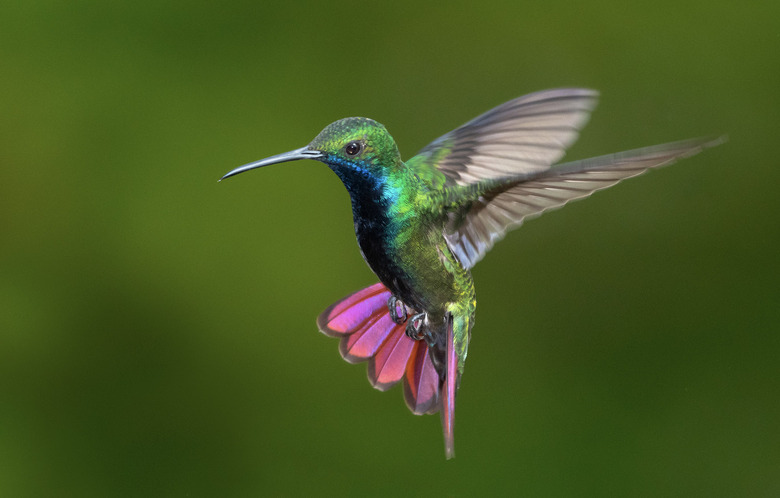Scientists Find Hummingbirds Practically Freeze Themselves At Night
- Hummingbirds enter a state of semi-hibernation at night called torpor, and researchers studied them closely.
- The birds are able to reduce their body temperature to close to the ambient temperature of the air.
- In some cases, the birds' body temperatures approached freezing.
Hummingbirds are often seen as the most hyperactive of all the bird species. They flap their tiny wings with incredible speed and zip around so fast that by the time you see one, you have mere seconds to enjoy its presence before it's likely to disappear. At night, however, hummingbirds enter a much more relaxed state called torpor.
Now, new research reveals that when the hyper little birds enter this chilled-out state, they have the ability to dramatically lower their body temperature. In fact, under certain circumstances, the birds can bring their bodies to near freezing. The research was published in Biology Letters.
The research, which examined hummingbirds living in the Andes, reveals that during this torpor state, the tiny birds thermoregulate themselves in a way that dramatically slows their metabolism and brings their bodies to close to freezing.
The study included over two dozen hummingbirds of various species, and almost all of them entered the relaxed torpor state during observation. This downtime lasted anywhere from five to ten hours, based on the species and individual bird, but those that remained in the state for a longer period of time maintained their body mass better than those that experienced shorter torpor states.
During this restful state, which is almost akin to hibernation that many mammals enter during cold times of the year, some of the birds lowered their body temperature to just a few degrees Celsius above zero, bringing them incredibly close to freezing. According to the researchers, the birds appeared lifeless during this period.
"You wouldn't even know it was alive if you picked it up," Blair Wolf, lead author of the research, said in a statement. "It's like hibernation but regulated on an even tighter schedule." The birds' internal clocks seem to manage things well, and at sunrise, the birds were right back to the typical, highly active selves.
The research is interesting, but it may have even more important implications. For one, scientists have long wondered how certain species are able to place their bodies into these low-metabolic states and endure for extended periods of time. Humans obviously don't possess that ability in any form, but what if they could?
One of the biggest challenges facing groups like NASA is how to prepare astronauts for long-haul spaceflights to locations like Mars. If it were possible to place a human in a state similar to torpor, it could be a very big deal and hugely beneficial. For the moment, however, that will remain in the realm of science fiction.
